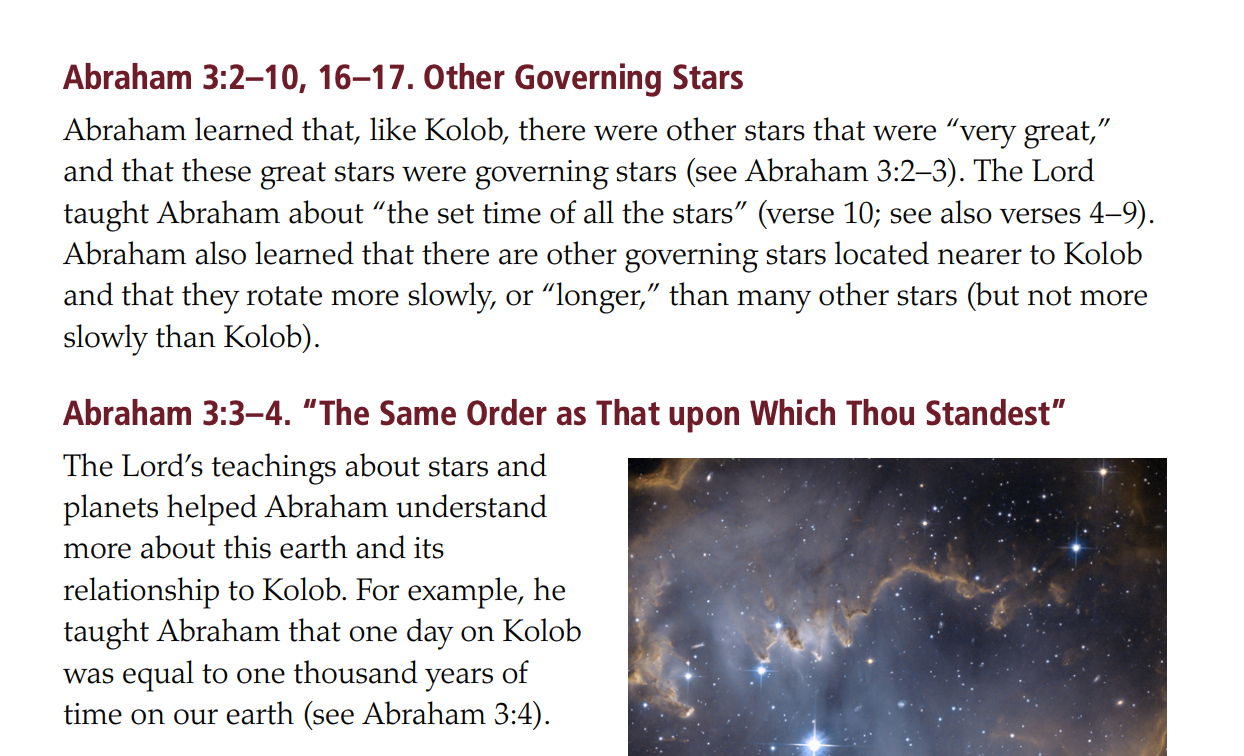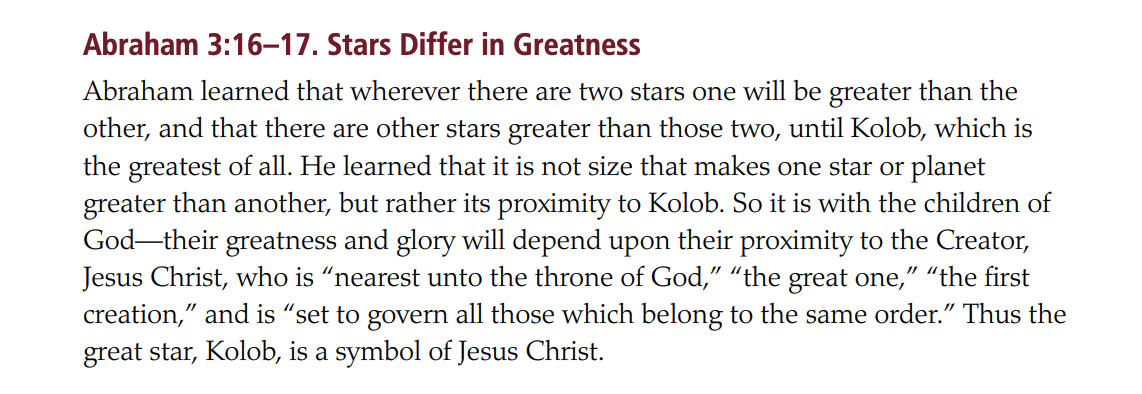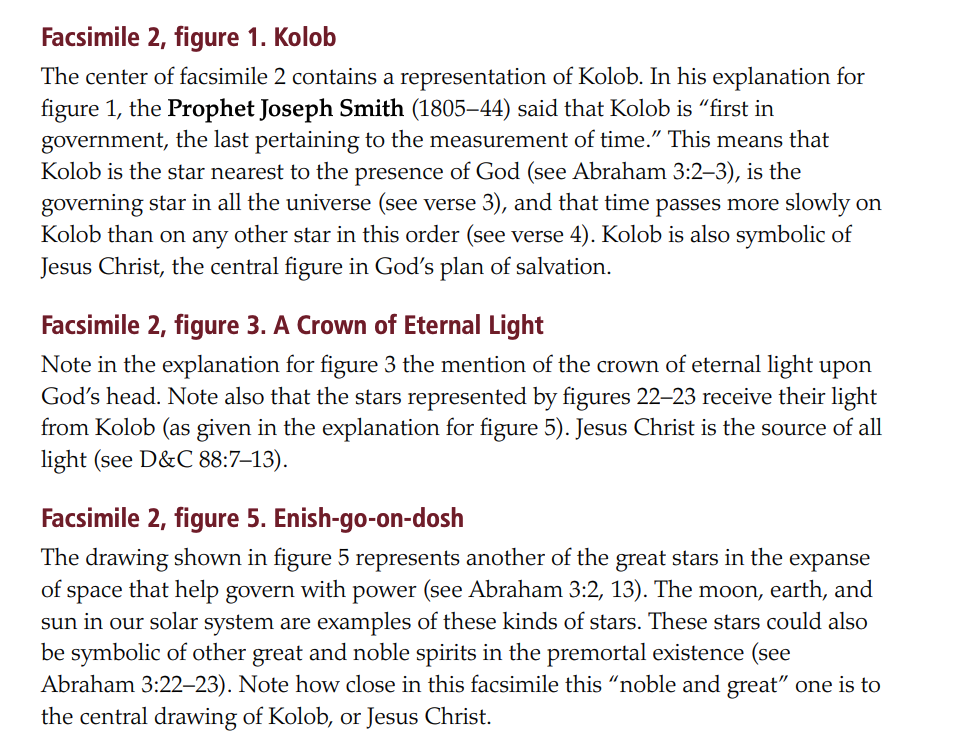Church manual discusses Kolob; calls it a star; says it can be seen as a symbol for JC.
- Type
- Book
- Source
- The Church of Jesus Christ of Latter-day Saints LDS
- Hearsay
- Direct
- Reference
The Pearl of Great Price Student Manual (Salt Lake City: The Church of Jesus Christ of Latter-day Saints, 2017), 72
- Scribe/Publisher
- The Church of Jesus Christ of Latter-day Saints
- Audience
- Latter-day Saints, Reading Public
- Transcription
Abraham 3:2–10, 16–17. Other Governing Stars
Abraham learned that, like Kolob, there were other stars that were “very great,” and that these great stars were governing stars (see Abraham 3:2–3). The Lord taught Abraham about “the set time of all the stars” (verse 10; see also verses 4–9). Abraham also learned that there are other governing stars located nearer to Kolob and that they rotate more slowly, or “longer,” than many other stars (but not more slowly than Kolob).
Abraham 3:3–4. “The Same Order as That upon Which Thou Standest”
The Lord’s teachings about stars and planets helped Abraham understand more about this earth and its relationship to Kolob. For example, he taught Abraham that one day on Kolob was equal to one thousand years of time on our earth (see Abraham 3:4).
. . .
Abraham 3:16–17. Stars Differ in Greatness
Abraham learned that wherever there are two stars one will be greater than the other, and that there are other stars greater than those two, until Kolob, which is the greatest of all. He learned that it is not size that makes one star or planet greater than another, but rather its proximity to Kolob. So it is with the children of God—their greatness and glory will depend upon their proximity to the Creator, Jesus Christ, who is “nearest unto the throne of God,” “the great one,” “the first creation,” and is “set to govern all those which belong to the same order.” Thus the great star, Kolob, is a symbol of Jesus Christ.
. . .
Facsimile 2, figure 1. Kolob
The center of facsimile 2 contains a representation of Kolob. In his explanation for figure 1, the Prophet Joseph Smith (1805–44) said that Kolob is “first in government, the last pertaining to the measurement of time.” This means that Kolob is the star nearest to the presence of God (see Abraham 3:2–3), is the governing star in all the universe (see verse 3), and that time passes more slowly on Kolob than on any other star in this order (see verse 4). Kolob is also symbolic of Jesus Christ, the central figure in God’s plan of salvation.
Facsimile 2, figure 3. A Crown of Eternal Light
Note in the explanation for figure 3 the mention of the crown of eternal light upon God’s head. Note also that the stars represented by figures 22–23 receive their light from Kolob (as given in the explanation for figure 5). Jesus Christ is the source of all light (see D&C 88:7–13).
Facsimile 2, figure 5. Enish-go-on-dosh
The drawing shown in figure 5 represents another of the great stars in the expanse of space that help govern with power (see Abraham 3:2, 13). The moon, earth, and sun in our solar system are examples of these kinds of stars. These stars could also be symbolic of other great and noble spirits in the premortal existence (see Abraham 3:22–23). Note how close in this facsimile this “noble and great” one is to the central drawing of Kolob, or Jesus Christ.
- Citations in Mormonr Qnas
The B. H. Roberts Foundation is not owned by, operated by, or affiliated with the Church of Jesus Christ of Latter-day Saints.



